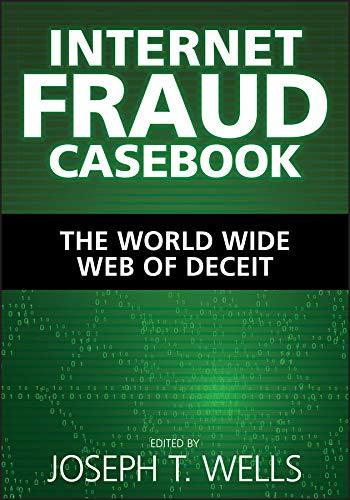Question
ACC 112 Company Analysis Project: Instructions Objectives of the Project: 1) To read a financial statement. 2) To become familiar with the typical contents of
ACC 112 Company Analysis Project: Instructions
Objectives of the Project:
-
1) To read a financial statement.
-
2) To become familiar with the typical contents of an annual report.
-
3) To assess the liquidity, solvency, and profitability of a company using ratio analysis and vertical
analysis.
A written summary for the questions must be submitted by April 3 at 11:00 pm using the assignment link in D2L. Late projects will not be accepted. Please proofread your work for spelling and grammatical errors.
List the page range where you found the information for each question (Annual report, p.2). The paper must be typed and follows APA format. Please include a title page and reference page with at least three reliable sources.
Please choose one company from the choices below. Access the most recent 10-K report of the company. Go to SEC.gov, Company Filings, then insert the CIK # below in the Fast Search field.
-
Hershey (CIK # 0000047111)
-
McDonalds (CIK # 0000063908)
-
Nike (CIK # 0000320187)
-
Amazon (CIK # 0001018724)
-
Facebook (CIK # 0001326801)
Please refer to the Ratio and Helpful Information Modules in D2L to help you complete this project.
Page 1
ACC 112 Company Analysis Project
Using the template provided, provide a written summary, in paragraph form, for each of the items below. Provide the proper citing when necessary.
-
Company Description: Identify the services or products the company provides, the major industries in which they compete, geographical locations in which they do business, and major competitors.
-
Chart Stock Price: Using Yahoo! Finance, indicate the exchange on which the shares of the company are traded and the ticker symbol. Chart the stock price of the company for eight weeks, beginning February 7 and ending March 27. Determine the gain or loss of the purchase of 1,000 shares of stock. List the closing price each week ending on Friday and the profit/loss each week. You may use a format similar to the one below:
-
Income Statement: Prepare a common-sized income statement (vertical analysis) for the most recent two years. What is the trend of Sales, Cost of Goods Sold, Expenses, and Net Income of the company? Comment on any other significant changes.
-
Balance Sheet: What have been the trends in growth/decline of assets, liabilities and stockholders equity? Review the long-term liability section of the balance sheet and describe the types of debt financing. How many shares of stock does the company have outstanding?
-
Statement of Cash Flows: The cash flow statement is divided into 3 areas: operating, investing, and financing. What are the major cash flow items in each area? What is the trend of cash flows over the most recent two-year period? Does the company have a positive cash flow from operations? What was the amount of cash flow generated from operations?
Page 2
-
Stockholders Equity Statement/Shareholders Equity: Has the company paid dividends (cash or stock)? If so, what was the amount of the cash dividend? What classes of stock does the company have? Are there any prior period adjustments, stock issuances or treasury stock evident in the past year?
-
Liquidity and Solvency Ratios and Conclusions: Compute the following ratios for the most recent two years, show all values in the computations:
-
Current ratio
-
Accounts receivable turnover
-
Debt ratio (Total Liabilities/Total Assets, as a percentage)
-
Debt-to-equity ratio
Based on the results above, what conclusions can you make about the liquidity and solvency of the company?
-
-
Profitability Ratios and Conclusions: Compute the following profitability ratios of the company for the most recent two years, show all values in the computations:
-
Asset Turnover
-
Profit margin ratio (Net Income/Net Sales)
-
Return on total assets (Net Income/Average Total Assets)
-
Return on stockholders equity
-
Basic Earnings per share (EPS)
Based on the results above, what conclusions can you make about the companys overall profitability and efficient use of assets?
-
-
Notes to the Financial Statements: This should be the most interesting part of your reading. Start with Note 1, which is usually the Summary of Significant Accounting Policies. Choose two of the notes to the financial statements and briefly describe them.
-
Auditors Opinion: What are the auditors willing to say about the financial statements? What type of audit opinion does this annual report contain (Unqualified, Qualified, Disclaimer of opinion, Adverse)? What does this opinion mean?
-
Conclusions: In your opinion, what is the most interesting part of the annual report and why? What is the least interesting and why? What is your prognosis for this company? Do you foresee success, failure, market leadership, stagnation, improvement, or decline? Why? You may point to economic, political, regulatory, resource, market, or other factors that will have an impact on the success of the company.
Page 3
Step by Step Solution
There are 3 Steps involved in it
Step: 1

Get Instant Access to Expert-Tailored Solutions
See step-by-step solutions with expert insights and AI powered tools for academic success
Step: 2

Step: 3

Ace Your Homework with AI
Get the answers you need in no time with our AI-driven, step-by-step assistance
Get Started


